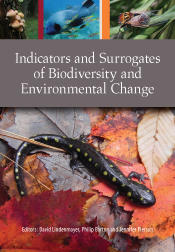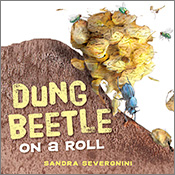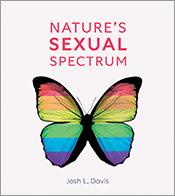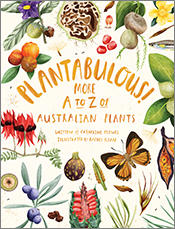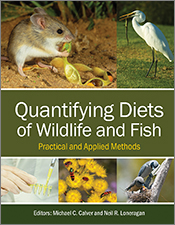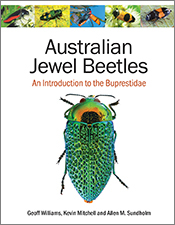Indicators and Surrogates of Biodiversity and Environmental Change
Edited by: David Lindenmayer, Philip Barton, Jennifer Pierson
Insights on using indicators and surrogates in natural resource management and conservation.
Ecological indicators and surrogates are used widely by resource managers to monitor and understand complex biota and ecosystem processes. Their potential to guide complex resource management has meant they have been proposed for use in all ecosystems worldwide. Despite extensive research into indicators and surrogates, there remains much controversy about their use, in addition to major issues and knowledge gaps associated with their identification, testing and application. + Full description
Indicators and Surrogates of Biodiversity and Environmental Change provides insights into the use of indicators and surrogates in natural resource management and conservation – where to use them, where not to use them, and how to use them. Using an ecological approach, the chapters explore the development, application and efficacy of indicators and surrogates in terrestrial, aquatic, marine and atmospheric environments. The authors identify current gaps in knowledge and articulate the future directions for research needed to close those gaps.
This book is written by the world’s leading thinkers in the area of indicators and surrogates. It is the first major synthesis of learnings about indicators and surrogates and will be a critical resource for the vast number of people developing and applying them in ecosystems around the world. It will be an essential resource for scientists, policy makers and students with interests in surrogates and indicators.
- Short descriptionNews
This title is no longer available in print format in Australia and New Zealand, but can still be purchased as an eBook.
Customers outside Australia and New Zealand seeking a print copy should contact CRC Press (external link).
Reviews
"The editors' aim is to concisely package the book in such a way that it both highlights the diverse ways in which surrogates are utilised,
whilst maintaining accessibility for a broad audience... Importantly, the change of authors from chapter to chapter allows for multiple perspectives to be expressed and encourages cross-disciplinary learning."
Evatt Chirgwin, Wild Melbourne (blog), 14 January 2016
"Presents a nice and easy-to-read summary of the use of surrogates across disciplines highlighting the overlap and important gaps across fields while also providing a set of relevant references for those interested in knowing more."
Ana M. M. Sequeira, Pacific Conservation Biology 23(2), 2017
Details
ePDF | November 2015ISBN: 9781486304103
Publisher: CSIRO Publishing
Available from eRetailers
ePUB | November 2015
ISBN: 9781486304110
Publisher: CSIRO Publishing
Available from eRetailers
Features
- Comprehensive overview of the application of indicators and surrogates to current resource management and conservation problems
- Outlines key areas of future research
Contents
AcknowledgementsAuthor biographies
1 Introduction – disciplinary and multi-disciplinary perspectives on ecological indicators and surrogates
2 Surrogates for the distribution and trajectory of biodiversity
3 Biodiversity surrogates
4 Conservation by proxy: thoughts 5 years on
5 Avian surrogates in terrestrial ecosystems: theory and practice
6 Using decision theory to select indicators for managing threats to biodiversity
7 Invertebrate indicators and ecosystem restoration
8 Mosses as passive and active indicator surrogates for investigations of atmospheric pollution and quality
9 Lichens as ecological indicators to track atmospheric changes: future challenges
10 Approaches, potential and pitfalls of applying bioindicators in freshwater ecosystems
11 Searching for the holy grail of wetland integrity: are surrogates still relevant in conservation planning?
12 Surrogates for coral reef ecosystem health and evaluating management success
13 Abiotic surrogates in support of marine biodiversity conservation
14 Building indicators for coupled marine socio-ecological systems
15 The application of genetic indicators in wild populations: potential and pitfalls for genetic monitoring
16 Use of surrogates in medicine: ideas that may be useful for ecology
17 Application of surrogates and indicators to monitoring natural resources
18 Indicators and surrogates in environmental management
19 A diversity of approaches to ecological surrogates and key knowledge gaps
Index
Authors
David Lindenmayer is a Research Professor at the Fenner School of Environment and Society at The Australian National University. He leads a range of large-scale, long-term field-based programs examining the impacts of land use practices such as forestry, plantation management and agricultural development on biodiversity.Philip Barton is a Research Fellow at the Fenner School of Environment and Society at The Australian National University. He is a community ecologist with a particular interest in insects. Philip is currently working on theoretical and empirical assessments of biodiversity surrogates.
Jennifer Pierson is a Research Fellow at the Fenner School of Environment and Society at The Australian National University. She is a population ecologist interested in population dynamics. She is currently working on empirical assessments of biodiversity surrogates, with a focus on genetic indicators and habitat-based surrogates.
With contributions from Maria Beger, Cristina Branquinho, Aram Calhoun, Tim Caro, Mark Drever, Hamish Greig, John Gross, Ben Halpern, Jani Heino, José Tomás Ibarra, Peter Lane, Catherine Longo, Gordon Luikart, Kathy Martin, Paula Matos, William H. McDowell, Camille Mellin, Melinda Moir, Barry Noon, Pedro Pinho, Hanna Salo, Michael Schwartz, Ayesha Tulloch and Martin Westgate.

